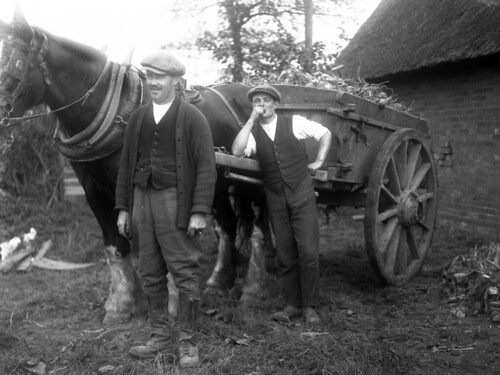
Load of Sugar Beets
NOTE: The following article of mine appeared on Seeking Alpha on November 25, 2009.
Third quarter farmland price survey results have been reported by the Seventh, Ninth, and Tenth Federal Reserve Districts. Price increases were reported in Iowa and Illinois, and irrigated land was up in the Ninth District. Otherwise, average prices trended downward for the quarter.
Seventh District:
The Chicago Federal Reserve's district includes the farm rich states of Illinois, Indiana, Iowa, Michigan, and Wisconsin. Farmland went up on average 2% for the quarter, but was down an average of 4% over the past 12 months.
By state for the quarter:
- Iowa up 4%
- Illinois up 2%
- Michigan up 1%
- Indiana down 1%
- Wisconsin down 1%
- Iowa down 7%
- Illinois down 4%
- Wisconsin down 3%
The Federal Reserve Bank of Minneapolis, for the states of Minnesota, Montana, North and South Dakota, northwestern Wisconsin, and upper Michigan reported:
Nonirrigated farmland declined 6 percent in value, irrigated farmland prices were up 5 percent and ranchland value dropped by an average of 7 percent.Over 50% surveyed reported lower income, especially hog and dairy farms, along with decreased spending and loan paybacks. There is concern over the fourth quarter and 2010 being break-even years at best.
Tenth District:
The Kansas City Federal Reserve's report includes the states of Nebraska, Wyoming, Colorado, Kansas, Oklahoma, northern New Mexico and western Missouri.
For the region, farmland prices declined moderately. Compared with last year's third quarter peak, nonirrigated land values dipped 1.7 percent, irrigated land values were down 3 percent and ranchland values fell 4.2 percent.This region reported the largest decrease in farmland prices for the quarter since 1987. Wyoming ranch-land prices fell 10% and Nebraska land across all three land categories fell 5%.
Survey results indicated an expected drop in livestock income of 10% and of crop income of 15% from a year ago in this region. Credit conditions were eroding, also.
Observations of Current Conditions:
Although this year's harvest was expected to be a near-record, there are areas of the Midwest that have only 50% of the corn and soy harvested in late November due to abnormal fall weather with high moisture conditions. A combination of low grain commodity prices, the high added costs of drying, and an incomplete harvest to date, make fourth quarter results look challenging. There is a consensus that in the near term farm cash flows will be distressed and rents are trending downwards.
Since the overall amount of land turning over during the third quarter was low, yet prices trended downward in most states, one might expect continued lower prices given a time period of increased land sales in the future, should that occur. While agricultural land is viewed as a safe investment and is being purchased by various investment vehicles, caution should be taken in expecting guaranteed price appreciations, in part due to the overproduction of some commodities in the U.S., and should government fiscal constraints curtail supporting corn ethanol programs which exist now.
Credit Conditions:
Credit conditions are deteriorating some in the way of agricultural loan paybacks. According to the recent USDA Amber Waves report:
...At the end of 2007, 50 percent of farm business debt was held by 15 percent of farmers, compared with 30 percent held by farmers at the end of 1986....The capital structure of U.S. farms has changed over the last two decades. Fewer farms have outstanding debts than in the past, but debt carried is concentrated among fewer and larger farms....If asset values or incomes falter, the burden of these declines will fall on fewer and larger producers and their creditors.Outlook:
Ranchland has depreciated most in price due to lower livestock prices. There is less demand for recreational land and high priced development and speculative land acquisitions due to the economic conditions. Ethanol plants are experiencing closures and challenging cash flows and have been the recent driver of corn price support. Producers continue to experience decreased returns with steady input costs. Rural agricultural community conditions are stressed, resulting in decreased area retail spending and rural job losses.
Conclusion:
It is very possible that we are still near a peak in farmland prices during this time period of real estate deleveraging. Whether you agree, most likely depends upon your outlook on the deflation vs. inflation question. Macro fiscal constraints required by federal debt burden levels, falling tax revenues, and future social spending requirements may dictate reduced government discretionary spending across all sectors, including agricultural price supports, in a not too distant future. This should be taken into consideration in evaluating how much to spend for agricultural land purchased today.